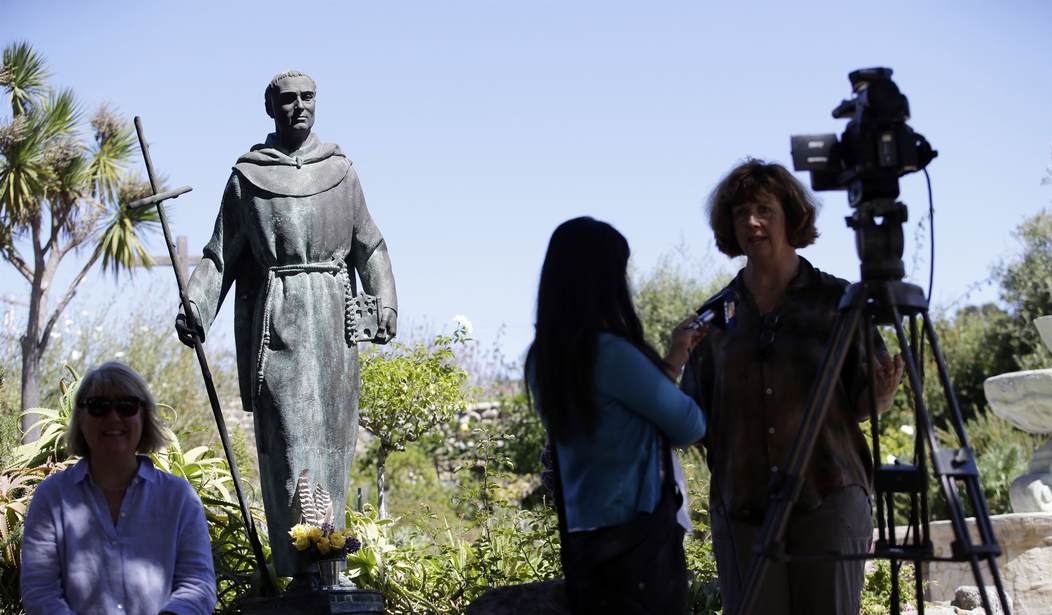According to an announcement from the university earlier this week, Stanford will soon be removing Junipero Serra’s name from a number of campus buildings and areas.
So far, it appears that the areas to be renamed include Serra Mall (the pedestrian and bike mall outside the university that serves as their mailing address), the Serra dormitory, and an academic building. Although Serra Street (located on campus) will keep its name, there are plans for new educational displays and “other efforts” to “more fully address the multidimensional legacy of Serra and the mission system in California.”
Father Junipero Serra is best known for being the 18th-century founder of the California missions. He was canonized a saint by the Catholic Church in 2015.
The decision to scrub Father Serra’s name was made by a committee comprised of students, faculty, staff, and alumni, which presented its ideas to the Stanford Board of Trustees. The board accepted the committee’s recommendations, along with university president Marc Tessier-Levigne’s suggestion to honor Stanford’s founder by renaming Serra Mall as “Jane Stanford Way.”
Progressive committee members felt that in spite of the significant role Junipero Serra played in California history, his “mission system inflicted great harm and violence on Native Americans.”
Recommended
“Revisiting how we think about historical figures is a challenging undertaking that requires care and humility,” stated Jeff Raikes, chair of the Stanford Board of Trustees. “With the passage of time, we gain new understanding of historical events, the people who shaped them and the effects of those events on others. At the same time, we know that all individuals’ lives are imperfect and that any exercise to evaluate a historical figure by present-day standards has limitations.”
Raikes also expressed concern that Native Americans might be upset by on-campus references to Father Serra.
“The committee called for renaming several features on campus that recognize someone who had no direct role in Stanford’s history and lived a century before the university was even founded, yet whose role as the recognized leader of the mission system provides an acute reminder to our Native American community of the profound impact of the mission system on indigenous peoples,” Raikes said.
Stanford’s review of Junipero Serra’s legacy officially began in 2016. An initial committee was reportedly unable to come to any conclusions, but instead developed a set of principles to be applied to the renaming decision. One of those principles was “the centrality of a person’s offensive behavior to the person’s life as a whole.”
The second committee acknowledged that while Catholics revere Junipero Serra for his “piety and missionary work”, he was also responsible for the “harmful and violent impacts of the mission system on Native Americans.”
Serra Mall was originally named after the well-known Franciscan priest and friar in 1891, and was rooted in the Stanford founders’ desire to honor the cultural legacy of the region. The university’s architecture was also influenced by the “mission revival” phenomenon typical of that period.
The Junipero dormitory within Wilbur Hall will not be renamed, as it is allegedly named after a juniper tree and not Junipero Serra. Stanford will, however, look for opportunities to “clarify” the meaning of its name.

























Join the conversation as a VIP Member